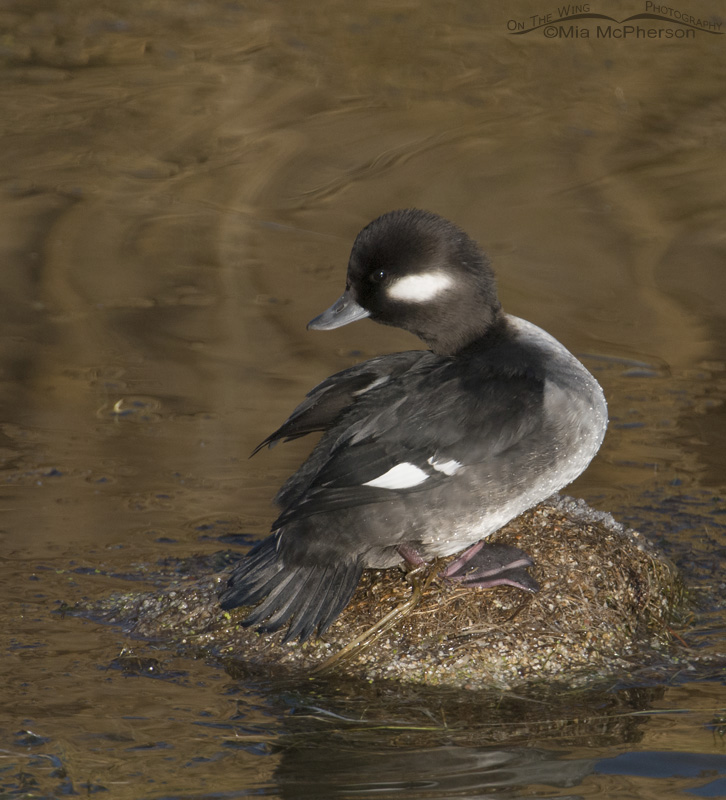 Preening hen Bufflehead (Bucephala albeola) – Nikon D200, f7.1, 1/1250, ISO 400, -0.3 EV, Nikkor 200-400mm VR with 1.4x TC at 400mm, natural light
Preening hen Bufflehead (Bucephala albeola) – Nikon D200, f7.1, 1/1250, ISO 400, -0.3 EV, Nikkor 200-400mm VR with 1.4x TC at 400mm, natural light
You wouldn’t know it by the recent daytime high temperatures that fall has arrived here in Utah but I can see the changes. Higher up than the valley the leaves have begun to change to bright yellows, rust red and oranges while the grasses have gotten that pale golden look I associate with this season.
Another wonderful change that I have been seeing is that a variety of duck species have been arriving at the Great Salt Lake and the freshwater marshes, lakes and ponds in the Salt Lake Valley.
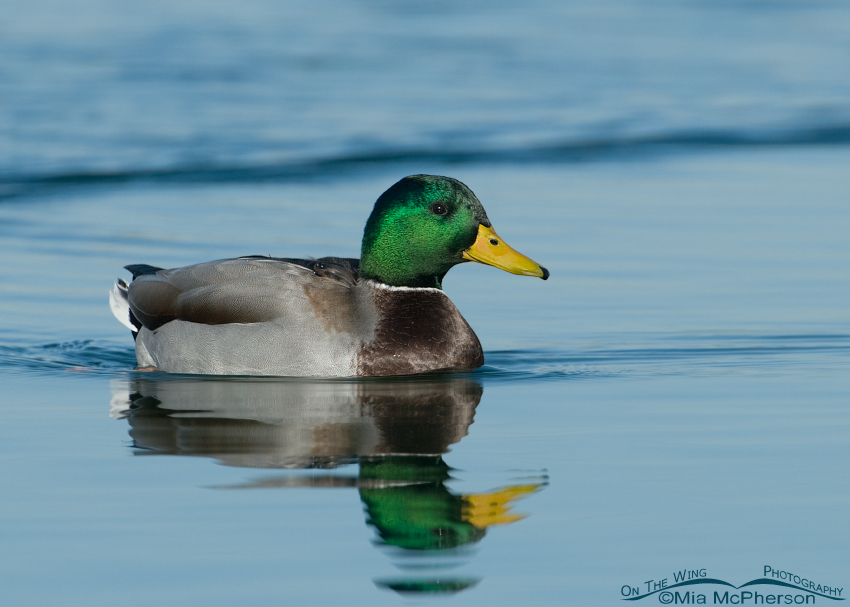 Mallard (Anas platyrhynchos) – Nikon D200, f8, 1/640, ISO 320, Nikkor 200-400mm VR with 1.4x TC at 400mm, natural light
Mallard (Anas platyrhynchos) – Nikon D200, f8, 1/640, ISO 320, Nikkor 200-400mm VR with 1.4x TC at 400mm, natural light
Mallards like the one shown above are present in the valley pretty much all year long but even the mallard population does seem to increase when autumn arrives. I know a lot of people who say they take them for granted because they are common throughout North America but I sure find the rich colors of the males appealing and the more subtle colors of the females equally so.
I was laying on a small rug of a snowy shoreline when I took the image above with my tripod as close to the ground as I was able to adjust it to get this low angle. The duck was eyeing me cautiously.
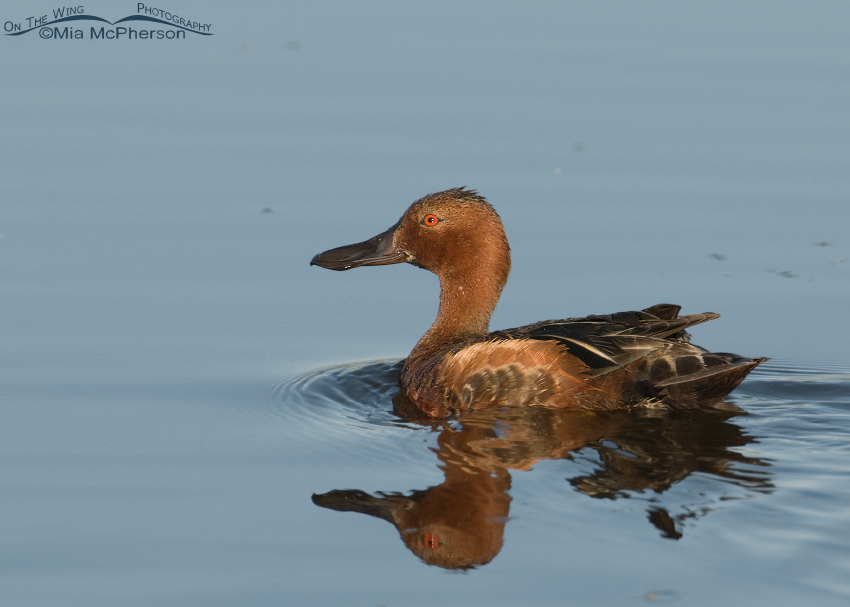 Cinnamon Teal (Anas cyanoptera) – Nikon D200, f8, 1/400, ISO 250, Nikkor 200-400mm VR with 1.4x TC at 400mm, natural light
Cinnamon Teal (Anas cyanoptera) – Nikon D200, f8, 1/400, ISO 250, Nikkor 200-400mm VR with 1.4x TC at 400mm, natural light
Not only I am seeing ever increasing numbers of ducks along the causeway to Antelope Island State Park, I am also seeing more ducks in flight. Duck hunting season starts today in Utah so the ducks will be even more wary than usual and will require well-developed stalking skills to photograph them, a blind; either fixed, portable or using a vehicle as a mobile blind, can help with the skittishness of the waterfowl during this period of time.
I love the brilliant red eye of male Cinnamon Teals combined with the rich, bronzy-red of their plumage.
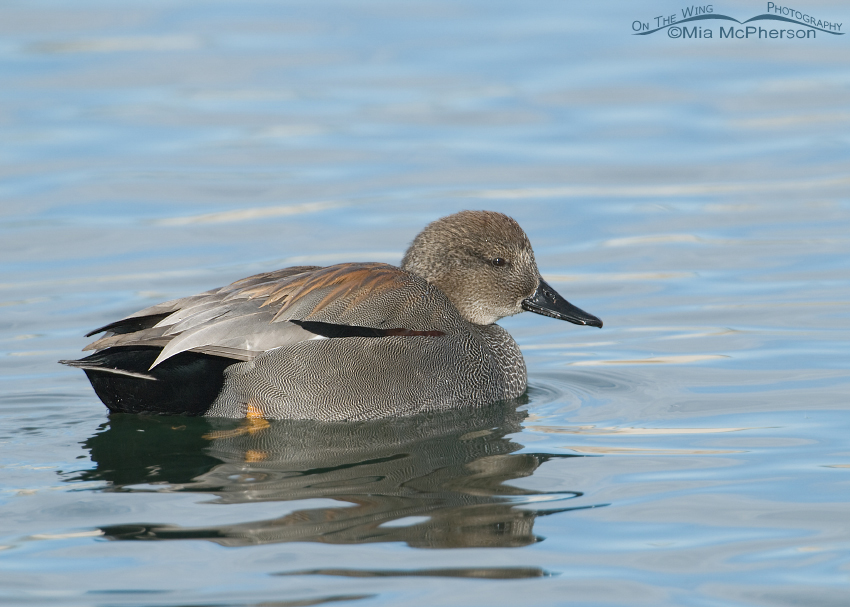 Gadwall in pastel colored water – Nikon d200, f7.1, 1/500, ISO 250, Nikkor 200-400mm with 1.4x TC at 400mm, natural light
Gadwall in pastel colored water – Nikon d200, f7.1, 1/500, ISO 250, Nikkor 200-400mm with 1.4x TC at 400mm, natural light
Some of the ducks that frequent ponds and lakes in the city parks are less skittish and will allow a closer approach than those in more “wild” areas. The Gadwall photo above was taken at a city park pond near where I live and was a very cooperative subject. I’m quite fond of the silvery tertials against the black rump of this species.
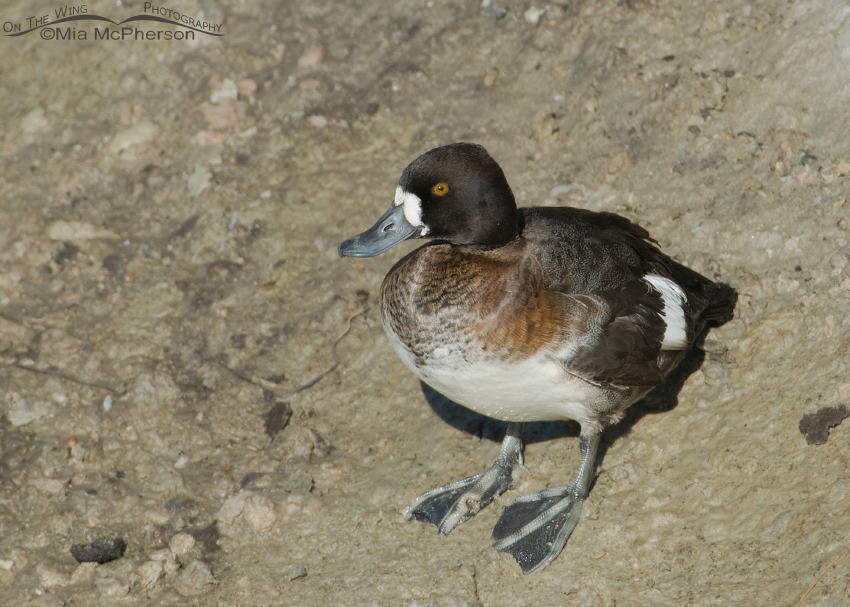 Greater Scaup on a muddy creek bank (Aythya marila) – Nikon D200, f6.3, 1/1000, ISO 400, +0.7 EV, Nikkor 200-400mm VR with 1.4x TC at 400mm, natural light
Greater Scaup on a muddy creek bank (Aythya marila) – Nikon D200, f6.3, 1/1000, ISO 400, +0.7 EV, Nikkor 200-400mm VR with 1.4x TC at 400mm, natural light
Greater Scaups are a duck species I do not see or photograph as often as I would like, the bird above was warming itself on a sunlit; albeit muddy, bank along a stream of water, well away from the larger impoundments where hunting is allowed.
The angle I used was a bit on the steep side, I had to aim my lens downward to photograph this scaup because it was about 6 – 8 feet lower than where I was located in a mobile blind. If I had so much as cracked the door open to get out to take a shot this duck would have been long gone before I could set up my tripod and mount the camera.
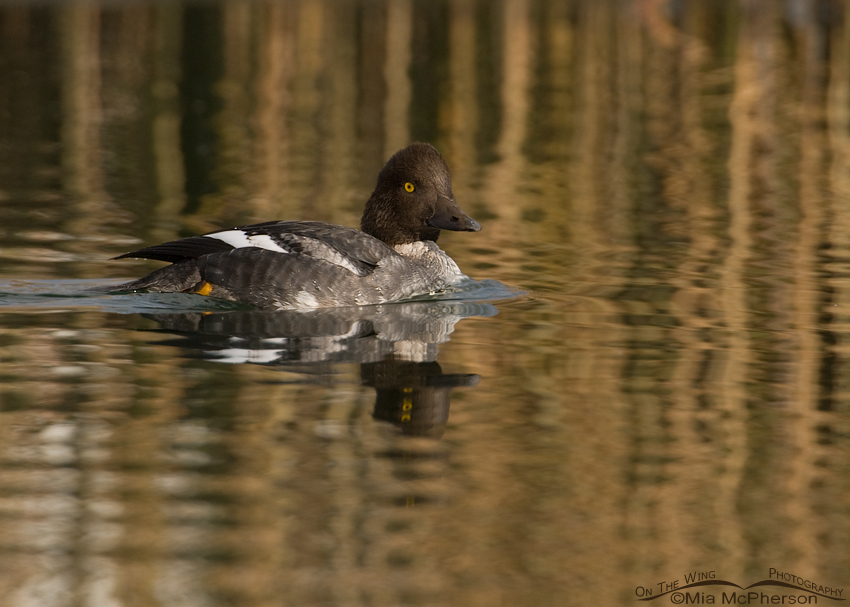 Common Goldeneye (Bucephala clangula) – Nikon D200, f7.1, 1/640, ISO 250, Nikkor 200-400mm VR with 1.4x TC at 400mm, natural light
Common Goldeneye (Bucephala clangula) – Nikon D200, f7.1, 1/640, ISO 250, Nikkor 200-400mm VR with 1.4x TC at 400mm, natural light
I have yet to have the pleasure of photographing any Barrow’s Goldeneyes but have found a few cooperative Common Goldeneyes near where I live and at other locations in the Salt Lake Valley. This beautiful bird was a bit more wary of me than the Gadwall I posted earlier and stayed hugged close to the edge of the cattails which are seen reflecting on the water’s surface. I’d love the opportunity to photograph the males in breeding plumage though they breed well north of here.
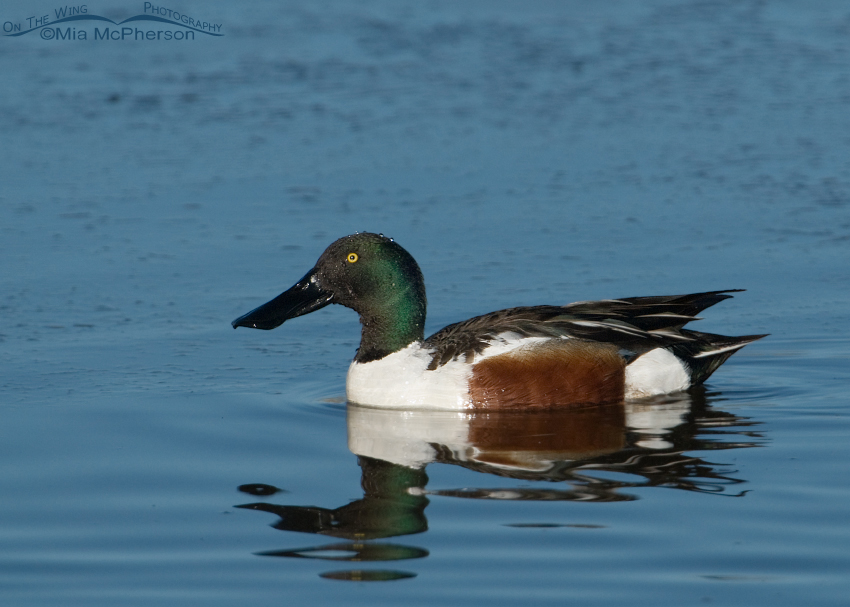 Adult male Northern Shoveler at Farmington Bay – Nikon D200, f7.1, 1/1250, ISO 400, +0.7 EV, Nikkor 200-400mm VR with 1.4x TC at 400mm, natural light
Adult male Northern Shoveler at Farmington Bay – Nikon D200, f7.1, 1/1250, ISO 400, +0.7 EV, Nikkor 200-400mm VR with 1.4x TC at 400mm, natural light
Another species that are seen in the Salt Lake valley in large numbers are Northern Shovelers. Huge flocks of shovelers can be found along the Antelope Island causeway and in the fresh water areas of the valley. The bills of the male and female shovelers are quite distinctive because of the length. I often think that the shiny black bill of the males remind me of black patent leather because they are shiny and look slick. Even from long distances; both in the water and in flight, Northern Shovelers are easy to identify because of their bills.
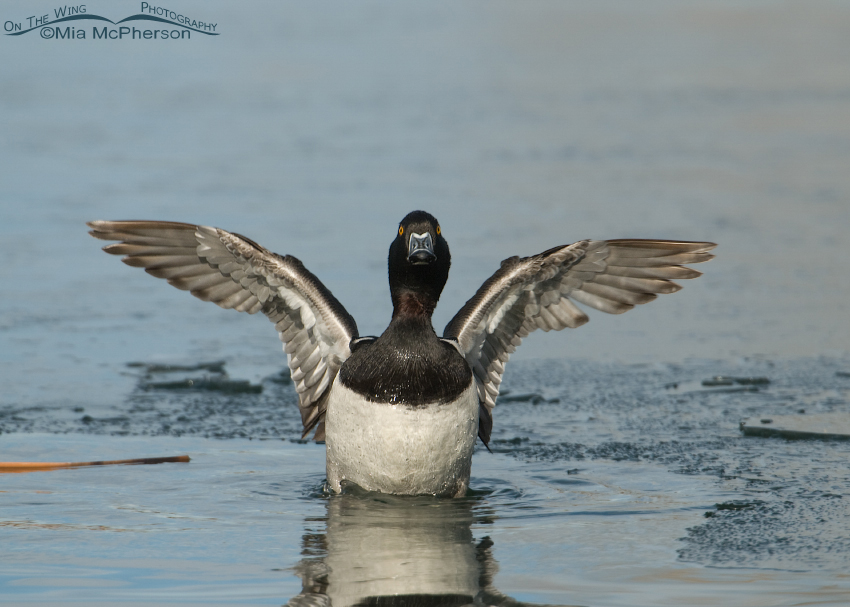 Ring-necked Duck (Aythya collaris) – Nikon D200, f7.1, 1/750, ISO 250, Nikkor 200-400mm VR with 1.4x TC at 400mm, natural light
Ring-necked Duck (Aythya collaris) – Nikon D200, f7.1, 1/750, ISO 250, Nikkor 200-400mm VR with 1.4x TC at 400mm, natural light
This male Ring-necked Duck was a visitor at the pond near my home, when I photographed it the middle of the pond was partially frozen and open nearer the shore. I have a feeling that this duck would have liked to have been a bit further away from where I was photographing it but in order to do that it would have had to get out of the water and walk on the thin ice. For the most part it stayed close to where the water met the ice. It was preening just before I took this frame and was flapping its wings to settle its feather back in place. There is a bit of the reddish color showing of the “ring” around its neck.
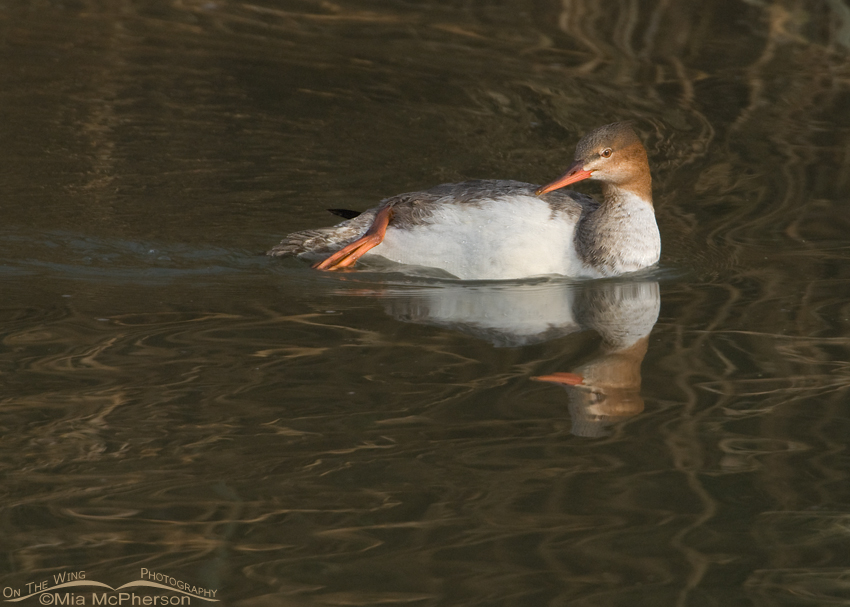 Red-breasted Merganser (Mergus serrator) – Nikon d200, f6.3, 1/640, ISO 400, -0.3 EV, Nikkor 200-400mm VR with 1.4x TC at 400mm, natural light
Red-breasted Merganser (Mergus serrator) – Nikon d200, f6.3, 1/640, ISO 400, -0.3 EV, Nikkor 200-400mm VR with 1.4x TC at 400mm, natural light
Mergansers don’t have “paddle shaped” bill that other ducks have, their bills are relatively thin in width and all merganser species in North America have serrated (saw like) bills that aid them in catching and maintaining a grip on their prey. The two large mergansers; the Red-breasted and Common, are long bodied, diving ducks.
The bird shown in the image above had been preening its belly when it struck this pose while giving me great eye contact. The bills of Red-breasted Merganser are more orange than the bills of the Common Mergansers whose bills are more reddish toned.
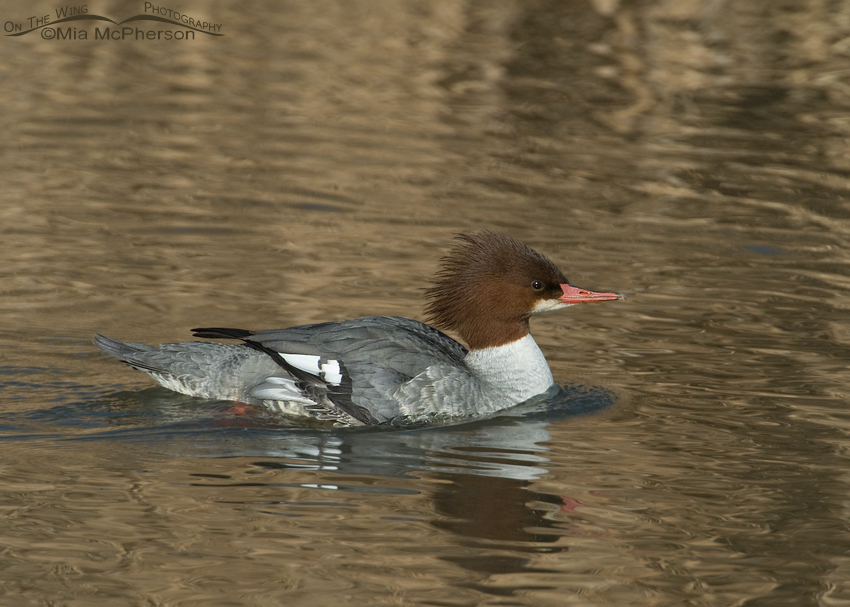 Common Merganser (Mergus merganser) – Nikon D200, f7.1, 1/1500, ISO 500, -0.7 EV, Nikkor 200-400mm VR with 1.4x TC at 400mm, natural light
Common Merganser (Mergus merganser) – Nikon D200, f7.1, 1/1500, ISO 500, -0.7 EV, Nikkor 200-400mm VR with 1.4x TC at 400mm, natural light
Common Mergansers also have dark eyes while the eyes of Red-breasted Mergansers are lighter and somewhat reddish in coloration.
I love to watch both of these mergansers hunting for prey, they move very quickly under the water and just below its surface. They amuse and delight me. Photographing them can be a challenge because the whites of their speculums are easy to blow out. I usually have to dial in some negative exposure compensation to prevent that from happening.
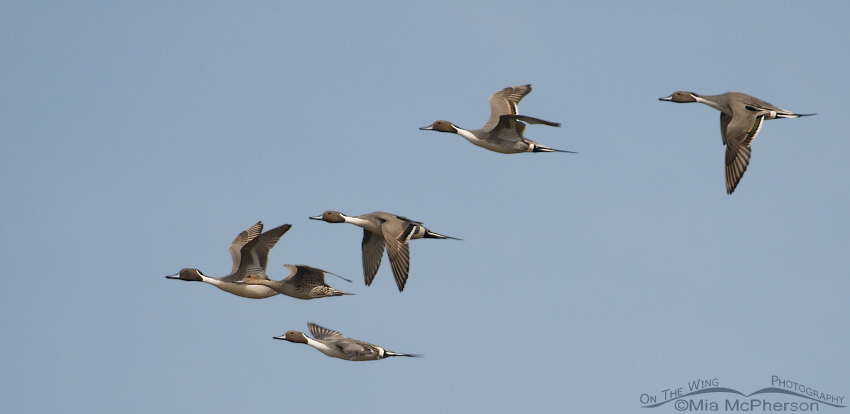 Northern Pintails (Anas acuta) – Nikon D200, f6.3, 1/1600, ISO 320, Nikkor 200-400mm VR with 1.4x TC at 400mm, natural light
Northern Pintails (Anas acuta) – Nikon D200, f6.3, 1/1600, ISO 320, Nikkor 200-400mm VR with 1.4x TC at 400mm, natural light
It is my opinion that Northern Pintails are one of the most beautiful ducks I have ever seen, I sure hope to have more chances to photograph them while they are here.
The ducks that I have shown in this post are just some of the ducks species that have or will soon descend onto the lakes, marshes and ponds in Utah, filling the air with their calls or the sounds of their wings as they fly by.
Yes, things are getting Ducky in Utah and for awhile they are just going to get even duckier!
Mia
Click here to see more of my duck, swan, and geese photos.
*PS, I spent last week photographing at Flaming Gorge National Recreation Area, stay tuned for images from there!


NEAT bunch of photos, really enjoyed this post. That Bufflehead pic is AMAZING!
Thanks Nicole, I had fun selecting the images and posting this article. I hope that you have been getting out to photograph before winter closes in up there.